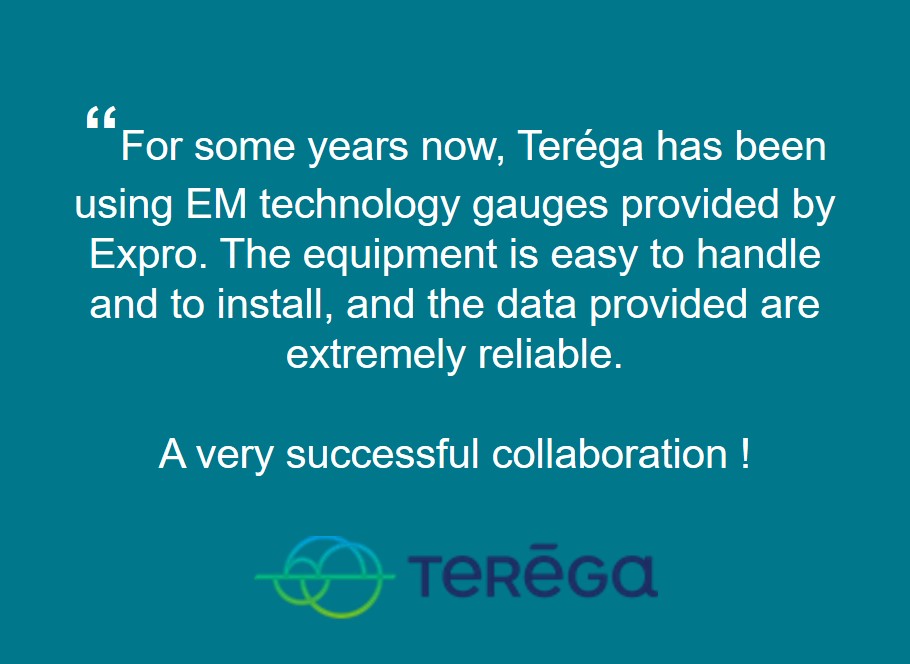- Home
- Products & services
- Well Construction
- Well Flow Management
- Subsea Well Access
- Subsea Test Tree Assemblies
- Intervention Riser System
- Riserless Well Intervention System
- PRT Offshore
- Motion Compensated Coiled Tubing Lift Frame
- Inline Compensator 600T
- Inline Compensator 220T
- ProFrame™ Coiled Tubing Lift Frame
- HOSS™ Wireline Lift Frame
- Gate Valve Flowhead
- Surface Test Tree
- Quick Union
- Lubricator Valve
- Subsea Landing String
- Subsea Controls
- ProComp™ Tower
- Intervention Work Tower
- Blue Sky Tower
- Accessories & Rental Tools
- Contact Us
- Well Intervention and Integrity
- Coretrax
- Sustainable Energy Solutions
- Case studies
- Media hub
- Careers
- Citizen of the world
- Contact
- Our 2023 Sustainability Review
- About Us
- Investors
- Locations
1,000,000 hours of wireless downhole gauge data

CaTS (Cableless Telemetry System) downhole wireless gauges to Teréga for reliable long-term pressure and temperature monitoring in their onshore gas storage wells in South West France.
The energy landscape is continuously evolving and, more than ever, there is greater drive and ambition to shift to renewable sources as our primary fuels.
As we work through these transitions there are challenges associated with implementing a greater share of energy sources such as wind, solar, and tidal. World natural gas demand is projected to reach 3.3 TCM by 2020 and the need for significant back-up gas storage capacity for intermittent renewable energy is evident. Gas storage will be an important enabler for the energy transition since simple cycle and combine cycle gas turbines are a cost-effective means of backstopping the variable electricity output of intermittent renewables. That function can only be met if the power generating units and their fuel supply is available.
One example of Expro’s support for this sector has been the provision of our CaTS (Cableless Telemetry System) downhole wireless gauges to Teréga for reliable long-term pressure and temperature monitoring in their onshore gas storage wells in South West France. France currently relies on Nuclear energy to provide 75% of its electricity, and the current government strategy aims to reduce this dependency to 50% by 2035. Our CaTS gauges have been supporting Teréga’s operations since 2007. Their continuous monitoring has played a critical role in optimising the annual cyclic gas-storage and production regimes for the country.
We have instrumented up to 13 different wells for Teréga, some including multi-zone monitoring in a single well, and have exceeded one million hours of downhole wireless monitoring since the first systems were installed in 2007. This is an industry-leading achievement for downhole wireless monitoring services and a testament to our in-house technology and capabilities.
During the summer months, the Teréga unde rground gas storage (UGS) facilities, charge the reservoirs and store the gas until the cooler winter period. The gas is then produced to the domestic energy grid in order to meet peak demands.
rground gas storage (UGS) facilities, charge the reservoirs and store the gas until the cooler winter period. The gas is then produced to the domestic energy grid in order to meet peak demands.
As part of the CaTS subsurface monitoring objectives, it is paramount to monitor the aquifer in order to maximise the amount of gas that can be stored underground, whilst not exceeding the virgin reservoir pressures and compromising the integrity of the naturally occurring storage capabilities. In order to operate safely, there are local regulation requirements to measure and report these reservoir pressures throughout the year.
In this downhole wireless monitoring application, gauges are retrofitted in the wells via standard slickline operations through existing production tubing, and into wells that do not have cabled permanent downhole gauges installed. This presents significant cost savings associated with performing well workovers and the installation of new cabled downhole gauges. Furthermore, gauge battery change-outs are typically performed every three years - a much longer time than for short-term memory gauge surveys. Performing fewer well interventions results in safer operations and reduced overall operating costs.
Delivering wireless downhole monitoring systems that efficiently and safely maximise underground gas storage volumes is just one example of Expro’s commitment and leadership in supporting the transition to renewable energies.
Related articles
Find detailed information about our products and services.
